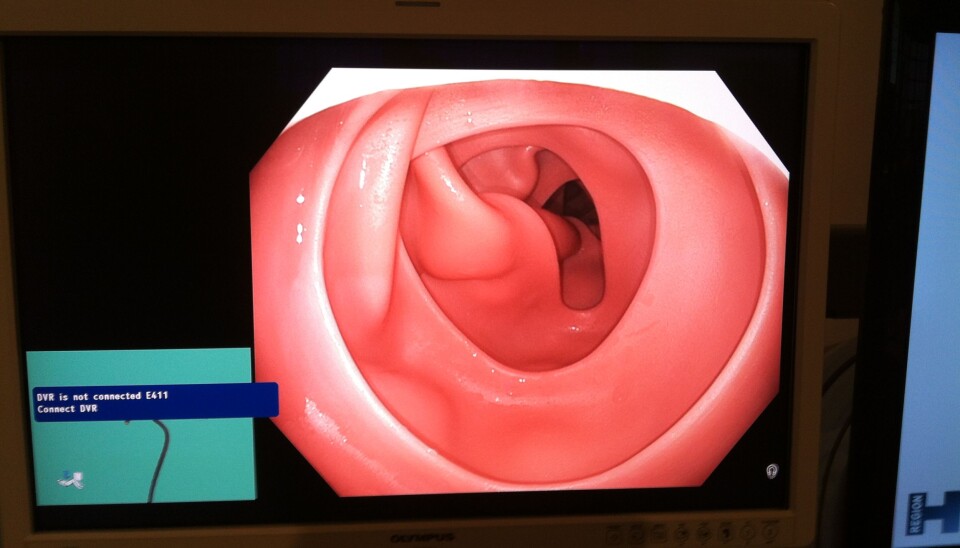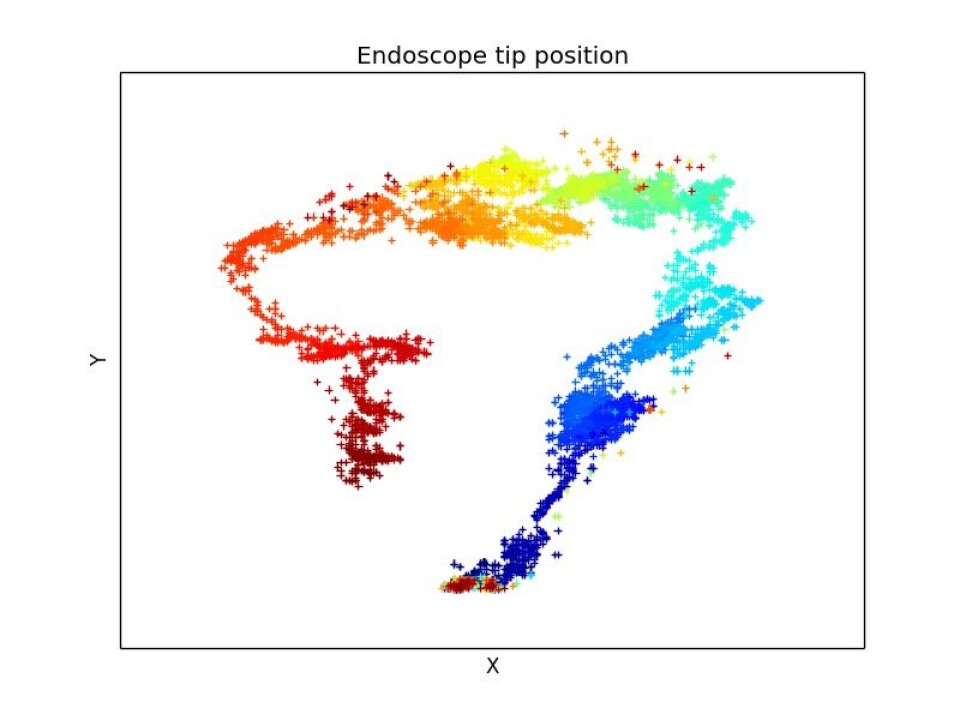
Colonoscopies should be less painful
A new type of software that measures the doctor’s pace and caution during a colonoscopy is currently being tested in several Danish hospitals. Researchers hope this will make future colonoscopies less stressful for patients.
The colonoscope, a thick, flexible tube with a light at the end, slips into the hole and begins its obstacle-filled journey up though the intestine.
Everything appears to be going smoothly. How hard can it be for a trained doctor, the inexperienced journalist thinks to herself as she is about to witness her first ever colonoscopy – performed on a dummy.
However, an endoscopy of the colon, also known as a colonoscopy, can be a painful affair if the doctor is sloppy and jostles the camera roughly through the intestine.
From March this year, all Danes aged 50 and over will be offered a rather painful and potentially dangerous colonoscopy every two years in connection with a national cancer screening programme.

With this in mind, medical staff at a number of Danish hospitals are currently testing a new method for assessing doctors’ scanning abilities.
With the help of computer software, the colonoscope is inserted through the intestine and registers not only the time it takes to complete the procedure, but also whether the doctor hits the intestinal wall. The hope is that this will improve the doctors’ scanning abilities so that patients can get a less painful treatment.
”If the tip of the colonoscope is not moving but the doctor keeps ramming it in, it can be very painful. This is one of the things we’re hoping to see less of when we start evaluating the doctors,” explains Morten Bo Søndergaard Svendsen, who is one of the researchers behind the new system.
Doctors are given points
“At the Centre for Clinical Education at the Copenhagen University Hospital, they wanted an objective mechanism for evaluating trainee physicians. There used to be a supervising doctor standing next to the trainee, evaluating the work. However, this is perhaps not a very objective method, and it also does not allow for the monitoring of each individual trainee physician’s level of development.”
This is what prompted Morten Svendsen and his father, a consultant surgeon at the Copenhagen University Hospital, to start developing the new system.
In the colonoscope sits a tiny chip, which helps to register where the colonoscope is located inside the intestine.
A piece of software, which is added to the computer that follows the camera, shows where mistakes are made or where it has taken longer than normal to get through the intestine. The system simply forms a drawing with dots, and the more densely the dots are packed, the harder it has been for the colonoscope to get through that area.
At the same time, the software calculates a score, which shows how good the doctor is at performing a colonoscopy.
Greater patient safety
Louise Preisler is a surgeon at the Department of Gastroenterology at the Copenhagen University Hospital, who is currently studying for a PhD. Her project includes studying the new evaluation mechanism during colonoscopies:
”I examine whether this system can improve doctors’ abilities to scan living people. Previous evaluations of the technical aspect of the process have relied on having a supervisor keeping an eye on proceedings,” she says.
Since the system is designed so that it calculates a score for each individual doctor, it is a good indicator for when the doctor is ready to perform a real-life colonoscopy. If you do not have enough points, you simply won’t be allowed near a patient’s anus.
According to Preisler, the new system not only increases safety for the patients; it can also result in better training for doctors:
”We will be able to analyse the learning curve of future colonoscopists and optimise it,” she says.
“After an examination it will be possible together with a supervisor to look at a map of the intestines and evaluate the work. If, for instance, the colonoscope has been stuck in one place, you can get some good pointers on how you could have led the colonoscope through the intestine with more ease.”
-------------------
Read the Danish version of this article at videnskab.dk
Translated by: Dann Vinther





